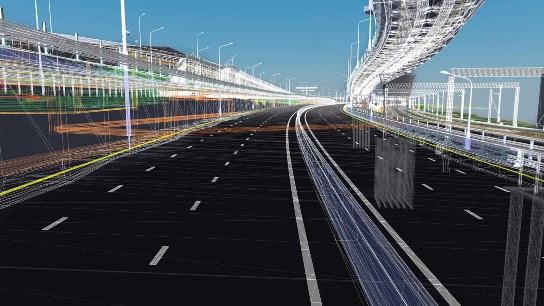
OUTCOME / FACTS
Within BCDE, the university can store information on the history and current condition of over 200 buildings of different ages, complexities, and uses
The time to data handover for completed construction to operations has greatly reduced, falling from the average of six months to one month.
Improved decision-making will help the university reduce costs while working toward the goal of generating 75% of needed power on site and reducing their carbon footprint by 3,000 tons per year.
OUTCOME / FACTS
Within BCDE, the university can store information on the history and current condition of over 200 buildings of different ages, complexities, and uses
The time to data handover for completed construction to operations has greatly reduced, falling from the average of six months to one month.
Improved decision-making will help the university reduce costs while working toward the goal of generating 75% of needed power on site and reducing their carbon footprint by 3,000 tons per year.

The University of Birmingham in England is currently undergoing the largest campus-wide redevelopment since the first phase of the campus was completed in 1909. The GBP 1 billion, 10-year program, begun in 2016, will create a wide array of new facilities for students, staff, and the community.
Due to the massive and multifaceted scope of the initiative, the University of Birmingham needed a method of carefully managing all project data that could securely support delivery and transition from planning to operations. The data management method they were using spread out the information through multiple, disparate legacy systems, as well as the university’s external supply chain, which made officials uncomfortable with the amount of risk this situation entailed.
In addition to making data retrieval inefficient and time-consuming, having information and data housed in external silos ran the risk of data loss. Therefore, university officials wanted to find a way to gain full control over their data and unite it in one platform.

University officials determined that going digital with a common data environment (CDE) would greatly improve project management. By establishing a CDE, they could break free all data from individual silos and store it in one location, lowering the time required to search for and access individual items, which would accelerate design and development.
Additionally, it would help combine all information types, from drawings and historical data to compliance and health and safety information, to improve decision-making. However, their environment would have to significantly reduce the time needed for asset information handover from contractors, which then required an average of six months but sometimes dragged on for a full year.
The university also wanted to ensure the CDE could support infrastructure building standards, including ISO 19650, as well as the university’s specific workflows. University officials sought a CDE that could help achieve all their disparate goals.

After examining multiple options, the University of Birmingham discovered that Bentley’s BCDE would unify their data while also meeting their specific requirements.
Working closely with Bentley experts, officials set up and customized BCDE to accommodate the university’s regulations, security requirements, and workflows.
Now, the University’s Estates Office team uses BCDE to manage all campus building data.
They can store information on the history and current condition of the 672-acre campus, including over 200 buildings of different ages, complexities, and uses.
The CDE also allows them to control the data while seamlessly collaborating with the various suppliers and contractors working on new construction and improvements.

With all information about the existing campus buildings as well as planned construction and improvement in one place, all stakeholders can now track and report milestones, changes, and decisions.
Everyone can access needed data much faster than before, with the time needed for handing over data to operations reduced to one month.
With less time needed to search for and compile data, team members can spend more time on design and construction tasks. By establishing clear workflows, university officials have greatly improved visibility into design and construction progress.
Decision-making has also improved, which will help the university continue to generate 75% of needed power on-site via combined heat and power plants, and to reduce their carbon footprint by 3,000 tons per year.
Compiling detailed information on all university assets will help designers build a campus-wide digital twin.
QUOTE
"The university continues to migrate more information into the CDE each day, including legacy documentation that can be uploaded with appropriate metadata and hard copy information scanned in. All of this activity means we will always be in the best possible position to surface information about our assets quickly without the risk of single points of failure and information losses."
Rich Draper
Head of BIM and Digital Assets
University of Birmingham Estates
Project Playbook